I'm trying to brush up on some electronics theory and am working through this PDF.
At the bottom of page F-6 there is a problem, F.1, that I am currently trying to solve. The circuit is as follows:

simulate this circuit – Schematic created using CircuitLab
In order to find the transfer function, $$T(s) = \frac{Vo(s)}{Vi(s)}$$
I first obtained the following equivalent circuit:

where $$V'i = \frac{Vi*C1}{C1+C2}$$
From this I get the transfer function using the Laplace transform: $$T(s) = \frac{s}{s + \frac{1}{R(C1 + C2)}}$$
At this point I'm not entirely sure if I have done everything correctly so I would like some verification. If this is not correct then please let me know so that I can edit the question showing my math. This should help us narrow down to where the mistake is. I just don't want to post all of the math unless I absolutely need to.
The second part of the question asks if this is a single time constant circuit, which I expect it is because the circuit can be reduced to a single capacitor and a single resistor. The type would be high-pass.
The third part of the question says that for the element values shown, find the poles and zeros. It is clear from the transfer function that there is a zero at s = 0 rad/sec and a pole at $$\frac{1}{R(C1+C2)} = \frac{1}{100k*2*(0.5*10^{-6})} = 10$$ rad/sec.
Are these answers all correct, and are they complete? Have I missed something? I have not done this for some time so I am in dire need of a refresher course.
EDIT:
The last part of the problem asks to sketch the magnitude and phase response Bode plots. I am having some trouble with this part. I have the following for the magnitude:
where plot A is the final gain. Did I do this part correctly? As for the phase, I'm not even sure where to begin. I have that $$Φ = -tan^{-1}(\frac{w}{10})$$ and I believe that the s = 0 term starts us off at +90°, so that would give us a straight line on the plot of degrees vs. rad/sec. I don't know where to go from there. Some assistance on this part would be appreciated. What is the next step (to plot the phase of the pole)? I know the phase would drop but where the drop begins/ends I do not know.
I am happy to provide further clarification wherever necessary.

